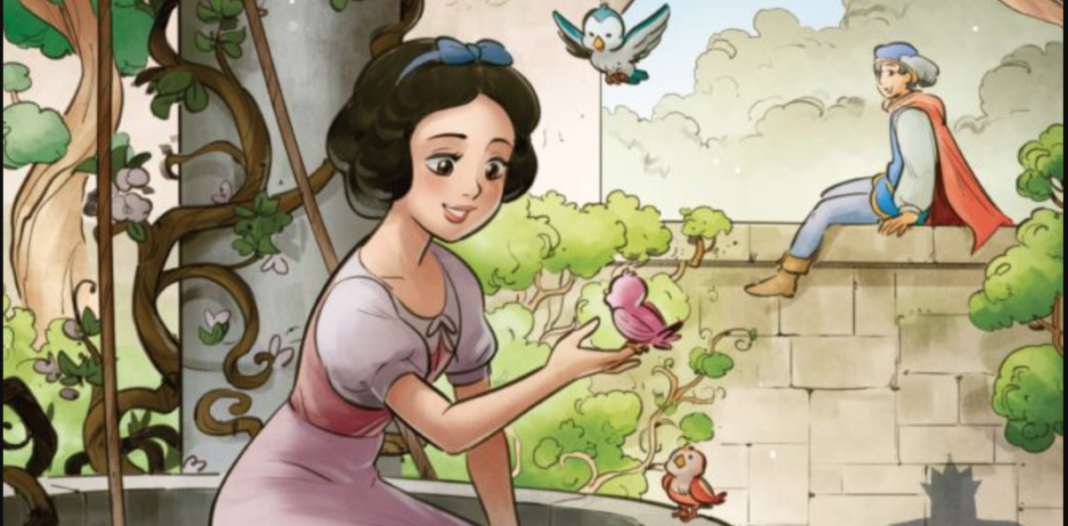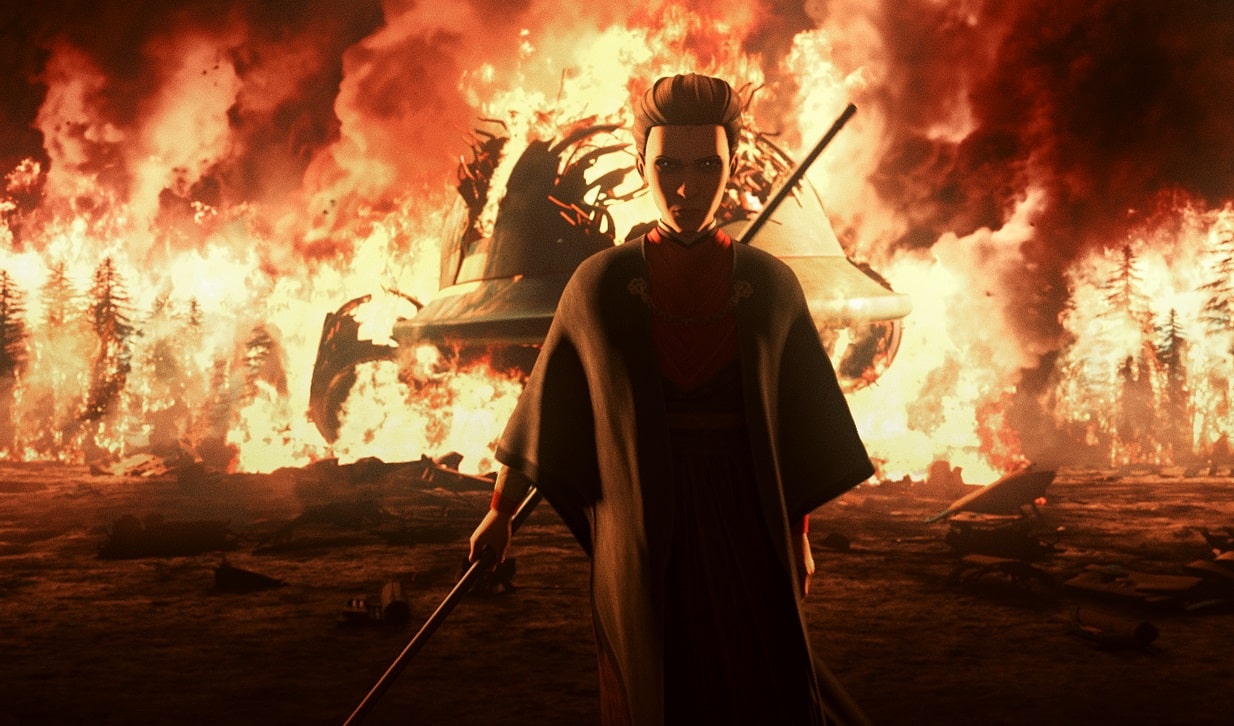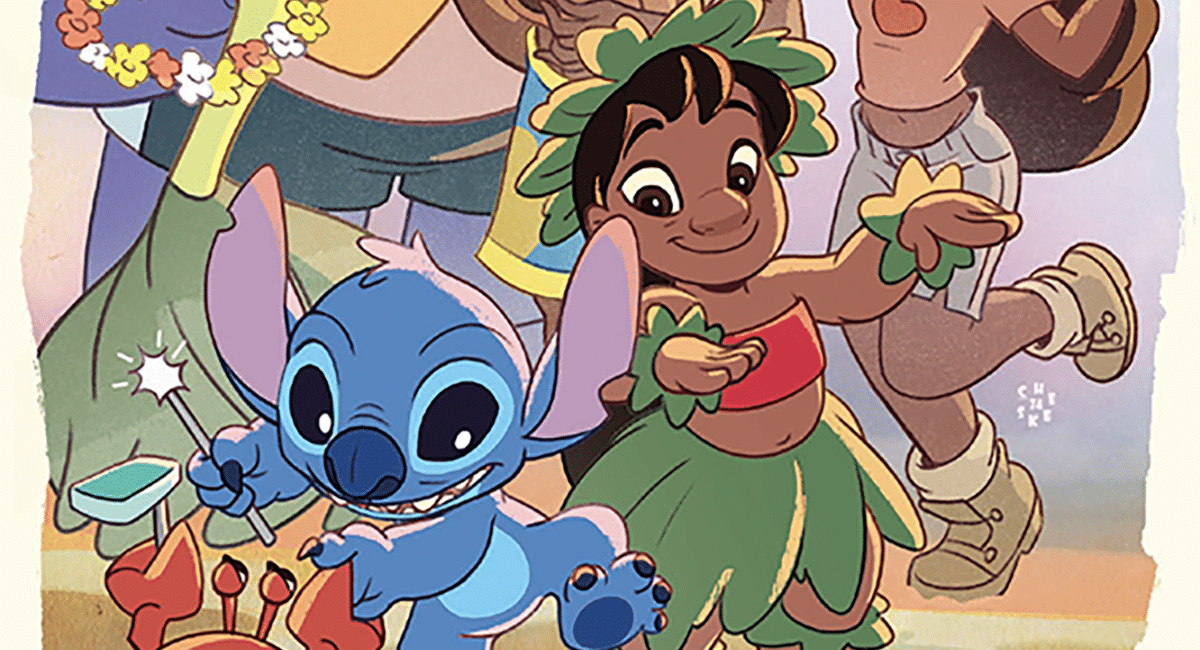As the Sunday crowd at Comic-Con was just stirring from its slumber for the last day at the convention, I headed over to the Dark Horse booth to chat with the lovely Cecil Castellucci about her modern revisioning of Disney’s classic Snow White and the Seven Dwarves for Dark Horse Comics. Castellucci is one of the busiest and most imaginative writers working in comics today, with work extending as far as mainstream superhero comics, YA/middle grade fiction, and indeed, revisiting the magic of Disney characters old and new.
In our oasis on the convention floor, away from the cosplaying mad queens and princes charming, I asked Cecil Castellucci about the challenges of writing classic Disney princesses for a modern audience, adding grit to what is thought to be a dainty character, and twisting expectations so that a tale that was thought to be common becomes relevant and exciting once more!
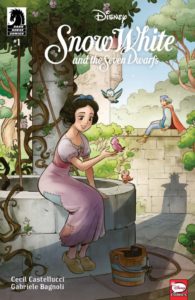
CECIL CASTELLUCCI: Actually, it was Dark Horse that emailed me and pitched the idea. They weren’t sure whether or not I’d be interested because it’s a princess, and it’s Disney. I was like, ‘Yes, absolutely!’ I actually live in the neighborhood where the original Walt Disney Studios was located and where Snow White was animated. It’s my grocery store! So I’ve just always felt like Snow White was accompanying me whenever I’m shopping for eggs and vegetables.
FROST: Was Snow White and the Seven Dwarfs one of your favorite animated films growing up?
CASTELLUCCI: I mean… it’s definitely one of my early movie memories. I think, for me, probably Cinderella, or Sleeping Beauty were a little bit more my favorite. But I think that Snow White was definitely a part of growing up. Also Robin Hood… that was probably my most favorite (the one with the fox). Now that I’m thinking about it, I’m like, ‘Wait! I liked this and that one!’ That’s the great thing about Disney, they’re so much a part of our story culture. And I love stories. I absolutely was thrilled to do it and I thought it would be really interesting.
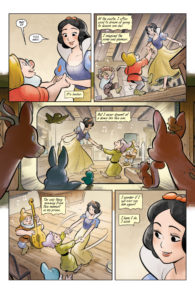
FROST: What’s the challenge of taking this story that was originally released in 1938, orienting it for a modern audience, and making it fresh, but still retaining the original elements that people come to expect?
CASTELLUCCI: With Snow White, it’s the first animated feature film. And so the way that a story was told in the 1930s is different from the way that we tell stories now. The pacing is slow and it’s quite deliberate actually. The first thing to consider is how do you make it snappier and move the pace quickly. The other thing is, if you watch “behind the scenes” documentary footage about Walt making Snow White, the studio’s artists had intended on including more scenes with the Prince, but, the character was hard to capture and convey in a convincing manner—he didn’t necessarily look as good as Snow White, which I found really fascinating. So, the filmmakers left many scenes with the Prince on the cutting room floor. When I was doing my research, seeing the Prince in this way made me realize that Walt was really thinking about Snow White and the Prince having a bigger connection and bigger moments together before she goes off into the woods and falls asleep.
FROST: I think the potential that makes retelling these tales interesting is that, if you look back at these older films, the princesses don’t have a lot of their own agency. They’re there to find true love. But now we’re in a whole different world, so to speak…
CASTELLUCCI: Yes.
FROST: So, how do you go about making Snow White not only someone who drives the action but isn’t just in the service of a man or any another character?
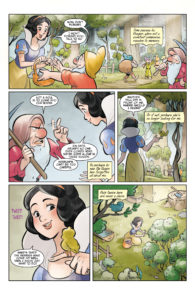
CASTELLUCCI: What I did—my solution—was to have deep conversations with the Disney team and my editor, Freddie Miller. The first thing I did was come up with just a whole bunch of questions about Snow’s life. It’s not like I’m just doing a straight retelling or my own retelling of Snow White. I’m doing an enhanced version of a fixed course, you know? So the first thing that I wanted to do was grow Snow White’s relationship with the servants, the huntsman, or the people in the castle who I believe probably really took a lot of care of her after her father died. And then, the other thing was to enhance and establish more of a conflict between her and the Queen that goes beyond just beauty. You can still feel the relationships in a sort of visceral way and make it about a girl who doesn’t understand why a caretaker doesn’t love her.
The third thing was to make sure that it’s clear that the Prince and Snow White really have a genuine connection together, so that when he comes at the end to find her and kiss her awake, that we the reader understand that this is something that is wanted and desired, something that these two really do have: a true connection. Oh! And the other thing was to make sure that when Snow White goes to the Dwarves’ house, that she’s not just in service to them, but that she is actively participating in the household. What she discovers there is a sense of freedom and a home. I give her more than just a broom. She’s got a hammer, she’s got a fishing pole, and she’s got a garden hoe.
The movie makes it seem like the action takes place quickly, like just one day or two days. That didn’t feel right to me. So I asked Disney for permission if I could just infer that the timeline was more like a month and a half or something because I feel like that gives her time and the dwarves time to relax their guard so that she would let the hag into the house.
FROST: In your research for the book, did you look at any of the old Italian Disney comics like Romano Scarpa’s The Return of Snow White or anything in that realm?
CASTELLUCCI: I didn’t. I did watch a bunch of sort of behind-the-scenes documentaries about the making of the animated film and Disney did send me some archival images about the making of Snow. Some of that stuff you mentioned does come up in those documentaries. But I really just tried to stick to the source material of the original film.
FROST: I know that the next Disney princess you’re working with is Ariel from The Little Mermaid. When does that comic come out?
CASTELLUCCI: This October.
FROST: What’s the contrast between Ariel and Snow White? Ariel is a bit more modern than Snow White, but I think they share some of the same issues of not being entirely in control of their own destiny. How do you compare and contrast the two? At the same time, how do you bring these characters into the modern moment?
CASTELLUCCI: One of the things these books do is that we never cut to anybody else’s point of view. There are blackout spaces and scenes that aren’t in the movies because we’re just following one main character. So that’s one way that I get to add to their agency. The brilliant thing about comics is that you can have inner thoughts that may conflict with what is actually happening on the page. But once again, you want her to have that moment where when she sees Eric and when she saves Eric, that there is a profound connection. My take on Ariel is that she is a curious explorer and she doesn’t see anybody else around her. She’s like a human girl looking up at the stars. I would liken her to a curious scientist in that way. She just sees a larger world than the world that she’s in. I think I think a lot of us can relate to that feeling, feeling like the odd duck where we can’t share our interests with anybody in our family or our peer group.
FROST: When you’re writing a book like Snow White or even P.L.A.I.N. JANES, are you thinking about the specific kind of audience for the book? I mean, for the two books I mentioned, those are designated as ‘all-ages’ comics and that does mean all ages. But do you have to tailor your work in a different way for each book? Or are you like… writing is writing so whoever reads the book, that’s the audience?
CASTELLUCCI: I do think writing is writing. I mean, if I know that my book is getting marketed towards younger people, then I’m not going to adjust the story or the sophistication of the story. I might just adjust some of the grittiness, but doesn’t mean that the story still can’t be gritty. There are certainly things even in Snow White… I mean the end of the first issue, there are scary pages…
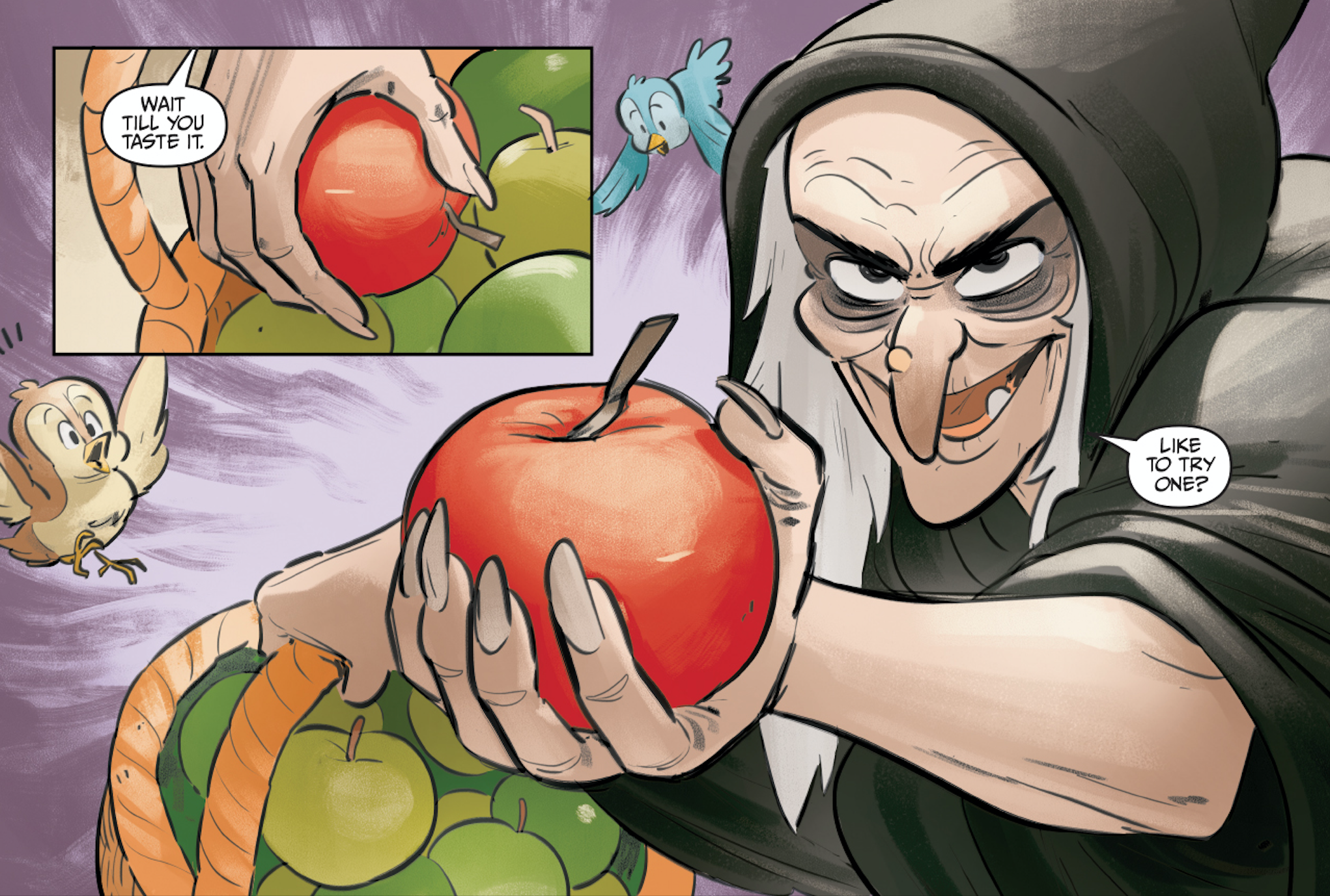
FROST: Yeah! Where the Huntsman has the long knife! So what is next for you?
CASTELLUCCI: I have The Little Mermaid that comes out in October and Frozen that comes out November. And I also have a graphic novel memoir called Girl on Film to be released by BOOM! in November. I have the PL.A.I.N. JANES omnibus coming in January and I’m on my new run on Batgirl at DC. So you know, just a few little things. I got to figure out what I’m going to do next!
FROST: Thank you for much for chatting with me today.
CASTELLUCCI: Thank you!
All three issues of Snow White and the Seven Dwarfs are currently available digitally and in comic shops. The trade paperback hits shelves November 20, 2019, and retails for $12.99. To keep up with Cecil Castellucci, follow her on Twitter.


